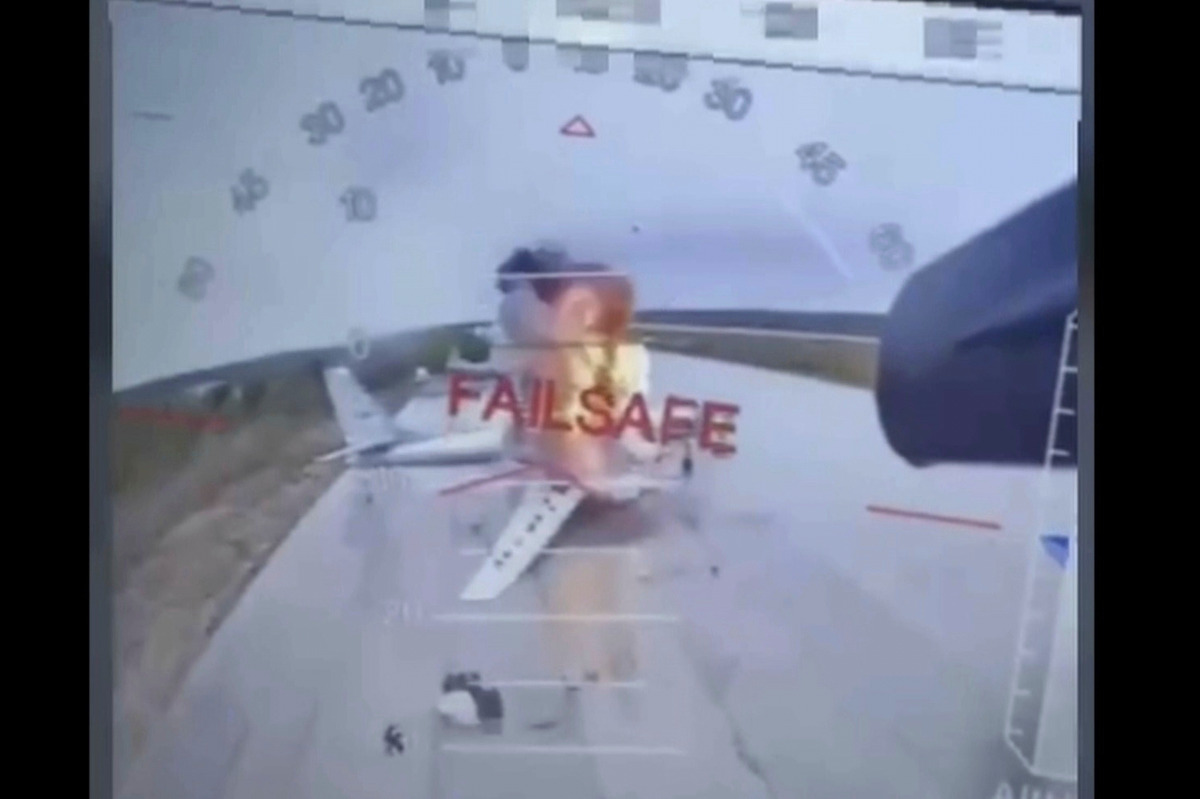
Little over three-and-a-half months ago, Ukraine executed a meticulously laid plan, homing in on Russian air bases thousands of miles across the border.
In one fell swoop, after a year and a half of planning, Ukrainian forces said they hit a third of Russia’s strategic aviation fleet—or 41 different aircraft.
It was both impressive and scary for Western militaries. It showed other countries just how vulnerable they could be to similar attacks.
Operations like Ukraine’s, dubbed Spiderweb, “could easily happen elsewhere,” Matt McCrann, the U.S. chief executive of counter-drone company DroneShield, told Newsweek.
“In some areas, even in the U.S., it’s actually easier to pull off something like that than it was in the Russia-Ukraine conflict,” McCrann said.
The Ukrainian plot was “very elaborate,” but in the U.S., “it’s a little bit more of an open door,” McCrann said. “There is nothing stopping” U.S. adversaries from placing devices close to military bases and “being able to plant the seeds” for a Ukraine-inspired operation, he added.
Newsweek has contacted the Pentagon via email for comment.
Operation Spiderweb was an “absolutely huge moment,” said U.K.-based drone expert, Steve Wright. It was “more sophisticated, daring and audacious than anything I thought possible,” he told Newsweek.
For many in the Western world, “the penny is really starting to drop now,” he continued.
The chief of Ukraine’s SBU security agency, Vasyl Maliuk, later said 150 combat first person-view drones were used in Operation Spiderweb, smuggled over the border and placed close to the airfields. Ukrainian agents rented offices and warehouses deep in Russia—including next door to a building operated by a regional branch of Russia’s notorious FSB domestic security agency.
Ukrainian operatives in Chelyabinsk, roughly 900 miles east of Moscow, bought a handful of trucks to transport the drones around the country. Each drone carried more than a kilogram and a half of specially developed explosives, formulated to both burn the outside of the aircraft and trigger an explosion inside the planes, the intelligence chief said. The operatives had already left Russia when the truck drivers set off for the targeted airfields, Maliuk said.
“We went through the ‘seven circles of hell’ to achieve the result,” the SBU head said.
Counter-drone ideas are a big business: Each time drones develop, anti-drone defenses have to evolve too. Drones are currently being updated every few weeks on the battlefields of Ukraine.
DroneShield, a mostly Australian-owned counter-drone company, says it has “close to 50” national militaries as customers and said in June it signed a $40 million deal to provide its technology to an unnamed European military.
There are various ways to intercept drones. Layered defenses will typically build in electronic warfare, cannons, interceptor drones or large-caliber machine guns—even nets.
In some, very uneconomical cases, cheap drones have been shot down with interceptor missiles worth millions of dollars. These defenses were crafted to combat advanced, fast-traveling and highly destructive missiles.
The U.S. is currently nailing down designs for the Golden Dome air and missile defense system, billed as a way to shield North America from “next-generation” threats like ballistic, cruise and hypersonic missiles. Loosely based on the Israeli Iron Dome system, which was developed to intercept shorter-range rockets, the Golden Dome—which would put American weapons in space—is currently expected to take several years to be initially operational. President Donald Trump has said it will cost roughly $175 billion, whereas a May estimate from the Congressional Budget Office indicated it could come with a $542 billion price tag over two decades.
Command and control systems and communications could be integrated across the larger defenses against advanced missiles in the Golden Dome and those dealing with drone threats, Wright said. But beyond this, the defenses against sophisticated missiles and disposable drones, from detecting them to intercepting them, would have to be separate, he said.
Air Force Chief of Staff General David Allvin said Ukraine’s strikes were a “wake-up moment” and the Golden Dome could incorporate anti-drone defenses.
Deep inside Russian territory, Kyiv appears to have used the country’s own phone system to coordinate the drone strikes, Wright said.
Open-source information indicates Ukraine plugged a mobile phone fitted with a Russian SIM card into the drones. It is essentially “hijacking your enemy’s local communication network against itself,” Wright said.
The U.S. has a “spectacular level of traffic of containers,” making it a relatively easy task to smuggle drones physically into the country, Wright said.
“Our very openness and sophistication as a society is what makes us more vulnerable,” he added.
A painful reminder of this came for NATO last week, when just under 20 Russian drones breached Polish airspace. Warsaw’s military shot down a handful of the uncrewed aerial vehicles (UAVs), which the country’s foreign minister, Radosław Sikorski, described as “duds” intended to “test” NATO.
Russia denied targeting Poland. NATO officials criticized the incursion as dangerous and reckless.
The European Union’s top defense official, Andrius Kubilius, reiterated his previous calls for a “drone wall” to shield the alliance’s eastern flank and the European Union states closest to Russia’s border. NATO also announced an initiative it has called Eastern Sentry, with the U.K., Germany, Denmark and France contributing extra jets to eastern Europe.
It’s also important to remember the Ukrainian operation was a professional state-coordinated attack, rather than carried out by rogue actors—which would likely impact how a drone operation on NATO territory would be carried out.



